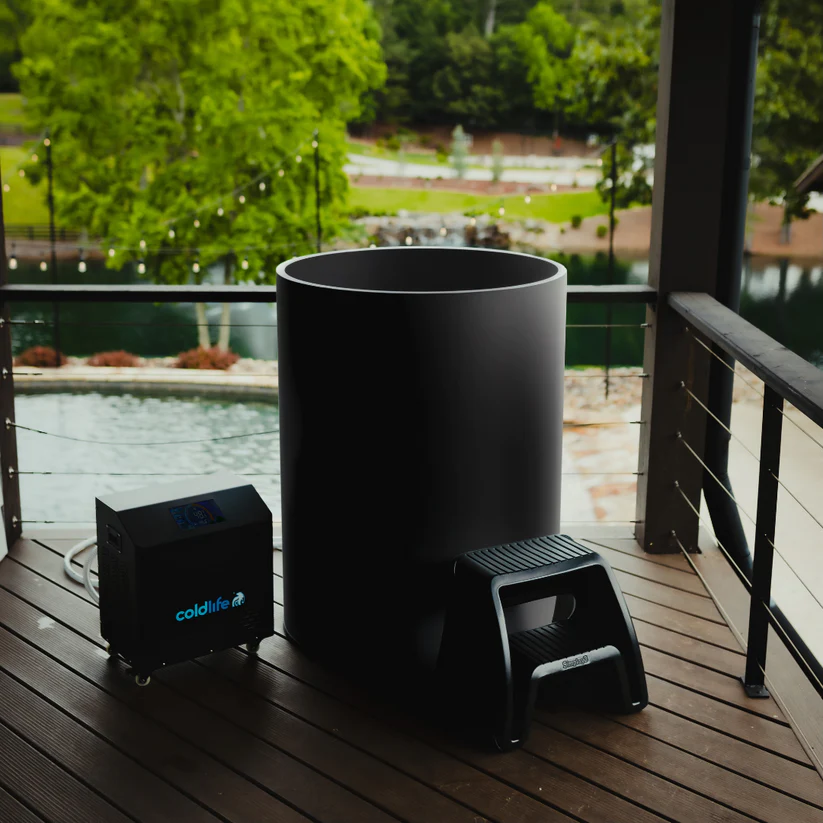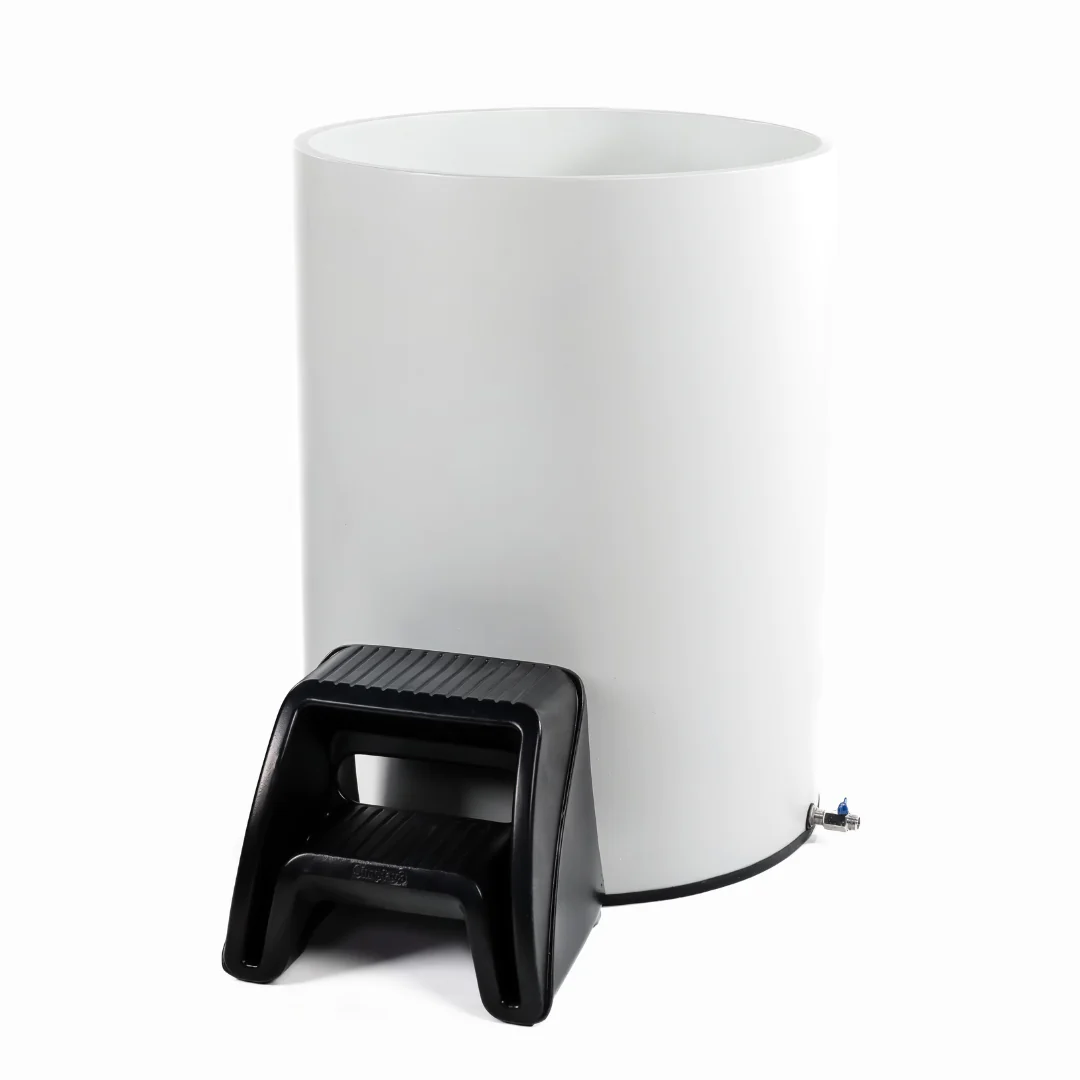Key Takeaways – Cold plunge or sauna first
Takeaway 1: Contrast therapy, involving a sauna and cold plunge, offers a range of benefits for your body.
So, you want to take your health and fitness game to the next level? Well, buckle up because contrast therapy might just be the ticket you’ve been looking for. By alternating between sweating it out in a sauna and plunging into icy cold water, you can give your body a real rollercoaster ride of temperature changes. And trust me, this wild journey is totally worth it! Contrast therapy works its magic by raising and lowering your core body temperature in quick succession. First, the sauna session gets things heated up by increasing blood flow and heart rate while also helping those muscles relax. Then comes the cold plunge, which swoops in like a superhero to reduce inflammation and speed up recovery. Think of it as the dynamic duo that gives your body the ultimate one-two punch.Takeaway 2: Choose between sauna or cold plunge first based on personal preferences and wellness goals.
Now I know what you’re thinking – which one should I do first? Well my friend, that depends on you! While there’s a general consensus among experts that starting with the sauna is the way to go, personal preferences and wellness goals also come into play. Some folks argue that diving headfirst into the icy waters of a cold plunge before hitting up the sauna is safer. They say that extreme heat from the sauna can potentially lower blood pressure and make you feel lightheaded. So if safety is at the top of your list, then maybe give that approach a whirl. But hey, don’t stress too much about getting it exactly right. The important thing is finding what works best for you – whether it’s going hot then cold or flipping it around like flipping pancakes in a Sunday morning breakfast bonanza.Takeaway 3: Beginners should start with shorter sauna and cold plunge sessions, while those with heart conditions should take precautions.
Alright, all you beginners out there, listen up! Rome wasn’t built in a day and neither will your contrast therapy routine. So take it slow and steady. Start off with around 10-15 minutes in the sauna just to get your body used to the heat. Then dip your toes into the cold water for a quick 30 seconds to 2 minutes – no need to go all polar bear plunge champion on us just yet. Now, if you happen to have a heart condition, it’s important to play it safe. Going from an ice bath straight into a heated spa might not be the best idea for you. The stimulating nature of the heat could do more harm than good. So make sure to consult with your doctor before diving headfirst into the contrast therapy pool. Remember folks, contrast therapy is like a dance – one step forward, one step back, but always keeping your body on its toes. So find what works best for you, keep it safe and enjoy the ride!Our #1 Best Recommended Cold Plunge
1. For those who always like to keep it cool, the ColdLife collection is your perfect match. 2. Discover the best cooling products on our ColdLife page and enhance your chilling experience. 3. Check out the top-rated items in ourColdLife range specially designed for the summer heat.Are you ready to redefine your limits with cold immersion?
Explore the compelling truth behind cold plunging and its remarkable benefits for mind and body.
Dive into the Cold Life Plunge Bundle now to embark on your journey to revitalization and strength. Transform your life today!
Here’s a Youtube Video about Cold plunge or sauna first
In this blog post, we delve into the intriguing domain of contrast therapy or alternating between heat exposure in a sauna and a cold plunge. In essence, it boils down to an individual’s personal preferences and wellness goals—whether you engage in a cold plunge or sauna first, both techniques have their unique benefits and risks.
Understanding the science behind each is crucial for creating an effective routine, especially for beginners who need clarity on the time duration to spend in each scenario. However, while this practice reaps numerous health benefits, caution is necessary as contrast therapy may not be suitable for individuals with heart conditions. Strap in for an enlightening exploration of contrast therapy’s fascinating landscape.

Understanding the Concept of Contrast Therapy
Contrast therapy, a term you may have come across in your search for wellness practices, is an exercise that involves the use of extreme heat and cold to stimulate your body’s natural healing processes. But what comes first? The cold plunge or sauna first?
This intriguing practice alternates between hot and cold environments such as a sauna and a cold plunge or ice bath. You see, performing this ritual allows for a more frequent fluctuation in your core body temperature. For those interested in thermal therapies, understanding the optimal order for these wellness activities can be crucial.
The Science Behind Heat Exposure in Sauna
In any case, let’s delve into sauna benefits first. Sauna sessions can yield impressive benefits like increased blood flow, improved heart rate, and much-needed muscle relaxation. All things considered; spending time immersed in hot water aids the body’s response to stress while providing an environment conducive to detoxification.

Download this courtesy guide to optimize your sauna and cold plunge experience and health optimization.
Download the Free Guide TodayBenefits and Risks of Cold Plunge After Sauna
Taking a cold plunge after a sauna session multiplies the effects of contrast therapy it seems. Cold immersion helps reduce inflammation and promotes faster recovery — bringing along numerous other cold plunge benefits.
The risk, however? Some argue that doing the cold plunge first might be safer, given that the heat from saunas has been known to lower blood pressure causing feelings of lightheadedness.
Personal Preferences and Wellness Goals: Cold Plunge or Sauna First?
Now that I think about it, the order of using sauna and cold plunge should be tailored to your personal preferences and wellness goals. There really isn’t a one-size-fits-all answer when talking about contrast therapy — should it be a cold plunge or sauna first? The key is finding what works best for you, whether that’s starting with the heat of a sauna, or diving into a cold plunge.
Creating a Routine for Beginners: Time Duration in Sauna and Cold Plunge
To help you get started on this thermal therapy process sequence, consider spending 10-15 minutes in the sauna followed by 30 seconds to two minutes in an ice bath. Once acclimatized to this routine, you can gradually increase your time duration — say up to 20 minutes in the sauna followed by three to five minutes of cold therapy.
Caution for Individuals with Heart Conditions: Is Contrast Therapy Suitable?
Note that contrast therapy may not suit everyone—especially those with heart conditions. The stimulating nature of going from an ice bath into heated water might pose potential health risks. Always consult with your doctor before embarking on any new wellness activity.

When considering whether to do a cold plunge or sauna first, there are various factors to consider. For one, it’s important to know what temperature is too cold for a cold plunge. This information can be found in our article on what temperature is too cold for a cold plunge. Additionally, it’s useful to understand the impact the order can have on your body. Our post about what happens when you go from sauna to cold plunge provides great insight into this matter. Knowing whether it’s safe to do a cold plunge when you’re not feeling well can also influence your decision about which activity to engage in first. Our informative content on should you do cold plunge when sick has got you covered on this aspect. Furthermore, learning more about how long a session should last before it becomes potentially harmful; our post titled is a 10 minute cold plunge too long provides valuable details in this regard. Finally, understanding the benefits and potential risks of both saunas and cold plunges is essential for making an informed choice between these two options. You may start by reading our posts on the subject: what is good about cold plunge, and is a cold plunge bad for your heart. By gaining a comprehensive understanding of these wellness practices, you’ll be better equipped to make the most out of your hot and cold therapy sessions.
My Personal Take about Cold plunge or sauna first
Hey there friend, I’m George, your resident expert on everything saunas and cold plunges.
Now that I think about it, you’ve probably wondered “cold plunge or sauna first?”. Well, don’t fret because that’s the exact topic of my latest blog post titled “Cold Plunge or Sauna First: What’s the Best Order for Optimal Health Benefits?“!
Indeed, delving into these rejuvenating practices can unlock a world of benefits – from detoxification to enhanced mood, better sleep and so much more.
- Saunas, with their enveloping warmth, encourage a deep sweat that purges toxins and relaxes muscles.
- Cold plunges, on the other hand, invigorate you instantly with an adrenaline-filled burst of energy while also reducing inflammation.
Our #1 Best Recommended Cold Plunge for most People
The conundrum of whether to plunge in the cold or to embrace the heat first has been long debated. As health enthusiasts, we have delved into this topic and laid out the pros and cons of both approaches in our article titled, Cold Plunge or Sauna first. Explore more about these therapies and choose the best order for optimal health benefits.Discover the unparalleled benefits of cold immersion with ColdLife Plunge 1. Unleash your full potential with our innovative cold plunging solution. Explore the transformative effects on your body and mind. Elevate your lifestyle with ColdLife Plunge 1 today!
Frequently Asked Questions about Cold plunge or sauna first
1. Is it better to start with a cold plunge or sauna?
The general consensus among experts is to start with a sauna and then opt for a cold plunge. This practice, known as contrast therapy, involves immersing your body in hot water followed by icy cold water.
2. Why is doing a cold plunge first considered safer?
Some argue that doing the cold plunge first is safer because extreme heat from the sauna can potentially lower blood pressure and cause lightheadedness.
3. What are the benefits of alternating between heat and ice?
Alternating between heat (sauna) and ice (cold plunge) has shown to boost immune function, reduce muscle soreness, improve stress response, and aid in detoxification by flushing out toxins through constricting blood vessels.
4. How long should I spend in the sauna and cold plunge?
For beginners, it’s common to spend about 10-15 minutes in the sauna followed by a 30-second to 2-minute immersion in an ice bath or other form of cold water. Gradually increase the time based on your comfort level.
5. Can individuals with heart conditions participate in contrast therapy?
Individuals with heart conditions are advised not to go directly from an ice bath into a heated spa due its stimulating nature which may not be suitable for everyone. It’s best to consult with a healthcare professional before trying contrast therapy.
6. How can I ease into contrast therapy if I’m new to it?
To ease into contrast therapy, you could start with 20 minutes in a hot sauna followed by three to five minutes in your chosen form of cold therapy thereafter. Gradually increase the duration and intensity of each session as your body acclimates.
Now you know Cold plunge or sauna first , but that’s only the beginning of your journey here at Sweat N Chill Zone. If you found this post useful there’s more to learn to get you to the next step of your sauna & cold plunge journey. If you read our next articles you’ll be a step further than most people.
Before you go…
Takeaway 1: Contrast therapy, involving a sauna and cold plunge, offers a range of benefits for your body.
So, you want to take your health and fitness game to the next level? Well, buckle up because contrast therapy might just be the ticket you’ve been looking for. By alternating between sweating it out in a sauna and plunging into icy cold water, you can give your body a real rollercoaster ride of temperature changes. And trust me, this wild journey is totally worth it! Contrast therapy works its magic by raising and lowering your core body temperature in quick succession. First, the sauna session gets things heated up by increasing blood flow and heart rate while also helping those muscles relax. Then comes the cold plunge, which swoops in like a superhero to reduce inflammation and speed up recovery. Think of it as the dynamic duo that gives your body the ultimate one-two punch.Takeaway 2: Choose between sauna or cold plunge first based on personal preferences and wellness goals.
Now I know what you’re thinking – which one should I do first? Well my friend, that depends on you! While there’s a general consensus among experts that starting with the sauna is the way to go, personal preferences and wellness goals also come into play. Some folks argue that diving headfirst into the icy waters of a cold plunge before hitting up the sauna is safer. They say that extreme heat from the sauna can potentially lower blood pressure and make you feel lightheaded. So if safety is at the top of your list, then maybe give that approach a whirl. But hey, don’t stress too much about getting it exactly right. The important thing is finding what works best for you – whether it’s going hot then cold or flipping it around like flipping pancakes in a Sunday morning breakfast bonanza.Takeaway 3: Beginners should start with shorter sauna and cold plunge sessions, while those with heart conditions should take precautions.
Alright, all you beginners out there, listen up! Rome wasn’t built in a day and neither will your contrast therapy routine. So take it slow and steady. Start off with around 10-15 minutes in the sauna just to get your body used to the heat. Then dip your toes into the cold water for a quick 30 seconds to 2 minutes – no need to go all polar bear plunge champion on us just yet. Now, if you happen to have a heart condition, it’s important to play it safe. Going from an ice bath straight into a heated spa might not be the best idea for you. The stimulating nature of the heat could do more harm than good. So make sure to consult with your doctor before diving headfirst into the contrast therapy pool. Remember folks, contrast therapy is like a dance – one step forward, one step back, but always keeping your body on its toes. So find what works best for you, keep it safe and enjoy the ride! Curious about the ideal temperature for a cold water plunge? It’s important to ensure safety, which is why understanding what happens when you take a cold plunge is crucial. Once you’re informed, you can then learn the best way to cold plunge and explore the most affordable options available.George From Sweat N Chill Zone
George, the passionate founder of Sweat N Chill Zone, is an ardent advocate for holistic wellness through the healing powers of saunas and cold plunges. With a background in health sciences and a fervent dedication to sharing the benefits of thermal therapy, George curates an informative space, offering insights, tips, and expert advice to help individuals optimize their health and well-being through the transformative effects of heat and cold treatments. Through Sweat N Chill Zone, George aims to inspire and educate, fostering a community centered around rejuvenation and vitality.
Download this courtesy guide to optimize your sauna and cold plunge experience and health optimization.
Download the Free Guide Today

